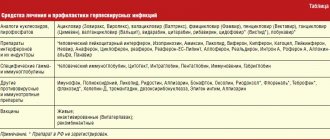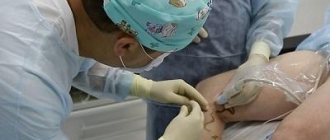Cruise sickness: noroviruses
One of the popular types of vacation today is traveling on a cruise ship. Sun, waves, inspiring landscapes. And “sea sickness” on modern ships is very rare. However, the “sea idyll” is still not as safe as it seems. Since a crowd of people in a limited space carries the risk of rapid spread of viral intestinal infections.
Norovirus
The virus got its name in 1968 from the area in which it was first recorded - Norwalk, Ohio. Then he caused an outbreak of acute gastroenteritis among students at one of the local primary schools. And today, according to statistics, norovirus is the cause of about 90% of all gastrointestinal epidemics of a non-bacterial nature.
The virus is extremely contagious (infectious) - only 10 viral particles are enough to cause infection. Whereas for infection with rotavirus it is necessary 10 times more.
The high contagiousness, viability and resistance of norovirus to the action of disinfectants in normal concentrations creates the preconditions for norovirus epidemics. And the main mechanism of transmission is fecal-oral.
Source
The reservoir and source of infection are infected people, both with severe symptoms and asymptomatic carriers. The latter, of course, pose a great epidemic danger because they release the virus into the environment without knowing it.
The disease develops within 12-48 hours of infection, and at the same time the maximum release of the virus is observed. It can last up to 45 days (on average 28) after the complete disappearance of symptoms, and in patients with immunodeficiency it can last up to 120-180 days.
Symptoms and immunity
The disease most often occurs as acute gastroenteritis, the main symptoms of which are:
- nausea,
- repeated vomiting,
- diarrhea,
- temperature increase,
- signs of intoxication: headache, weakness, chills.
The duration is usually no more than 2-5 days, and treatment consists of taking enterosorbents (enterosgel and others), antipyretics (if necessary) and restoring water and electrolyte balance (drinking regime, rehydron and similar drugs).
Like other viral infections, infection with norovirus is accompanied by the synthesis of specific antibodies. IgA in the intestines - block the introduction of the virus into cells, and IgG in the blood supports immunity for the next 9-15 months.
However, such immunity does not protect against other similar infections - rota-, astro-, adenovirus, the symptoms of which are most often indistinguishable from “norovirus”.
How to avoid bringing the virus to your loved ones
Due to the possibility of long-term asymptomatic shedding of norovirus, upon return from a sea voyage we recommend that you undergo testing for intestinal viruses. The OKI-test complex is an analysis of stool for 4 types of virus, as well as pathogens of dysentery and salmonellosis, which are widespread in tropical countries. The PCR technique makes it possible to detect even the minimum content of the pathogen in the material, and the readiness period is only 3 days.
Intestinal viral infections in children
Sologub T.V. – Professor, Honored Doctor of Russia, Chief Infectious Diseases Specialist of the Northwestern Federal District, Head. Department of Infectious Diseases of St. Petersburg State Medical Academy named after. I.I. Mechnikova, Doctor of Medical Sciences, Academician of MANEB.
Acute intestinal infections have been and remain one of the most important problems in both domestic and foreign infectology. Moreover, in the vast majority of cases, infectious diseases occurring with gastrointestinal tract syndrome are caused by viral agents. Thus, according to WHO, viral infections account for 70% of all acute intestinal infections, while the number of acute intestinal infections of bacterial etiology is no more than 30%. Rotavirus, according to various authors, is the cause of 20-60% of acute intestinal infections in children, and the incidence of norovirus infection ranks second in the structure of all acute intestinal infections and accounts for about 25% of cases.
Intestinal viral infections primarily affect young children (under 3 years of age), as well as people over 60 years of age. A number of authors note an increase in the number of cases of rotavirus infection, with a continuing trend towards underdiagnosis, however, the dynamics of incidence rates are not the same for different regions. Thus, in Moscow, according to the Federal Service for Surveillance in the Sphere of Consumer Rights Protection and Human Welfare, in the first half of 2007, there was a decrease in the incidence of rotavirus infection by 11.9% compared to the same period last year; in the first half of 2007, the number was 14. 67 per 100,000 population. The age structure of incidence corresponded to general trends. The highest incidence rates were recorded (in descending order) in the age group from 1 to 2 years, among children under 1 year of age and children from 3 to 6 years.
Etiology
The discovery of rotavirus occurred in 1973, and in 1979 the WHO officially approved its name, which comes from the Latin “rota” - wheel, due to the similarity of the viral particle to a wheel under microscopy.
Rotaviruses are divided into five groups: A, B, C, D, E, among which the main epidemiological significance is the rotavirus of group A. The virus is resistant to the action of conventional disinfectants, persists for a long time in the external environment, but is destroyed by boiling and treatment with strong acids and alkalis.
Norovirus was first discovered in 1972 in the US state of Norfolk, which is where its original name Norfolk virus came from. Previously, the disease caused by norovirus was associated with eating poor quality foods, in particular shellfish and other seafood.
The infection is widespread in the USA, Australia, Japan, Great Britain and other countries. According to various data, antibodies to norovirus are detected in 50-70% of the adult population in different countries.
Norovirus belongs to the calicivirus family. The virus is stable in the external environment and is easily transmitted through touch.
Epidemiology
Intestinal viral infections are widespread in all countries of the world. The source of infection is only a sick person; strains found in animals do not pose an epidemiological danger to humans. The transmission mechanism is fecal-oral, carried out by contact, water and nutritional routes. The possibility of transmission of infection by airborne droplets is currently being discussed, but is rejected by most authors.
Rota and norovirus infections are characterized by autumn-winter seasonality, the causes of which remain not fully understood. Apparently, these viruses are more stable in the external environment at low temperatures. In addition, in the winter months there are phenomena of immunodeficiency, which also favors the spread of the virus. Sporadic cases of the disease are also recorded in the summer.
Mostly young children are affected; among children over 11 years of age, the incidence decreases significantly and increases again in the age group of 60 years and older. It should be noted that in children under 6 months, especially those who are breastfed, intestinal viral infections are less common than in the age group from 6 months to 3 years, which is apparently due to the transfer of antibodies to the virus from mother to child and breast milk. In older children, with a decrease in immunity, the disease occurs much more often. The extremely high frequency of detection of antibodies to rotavirus in older children allows us to reliably state that by the age of four, up to 90% of children suffer rotavirus infection. Immunity is unstable, type-specific. Most children experience the infection more than once, with subsequent illnesses occurring in a milder form than the first.
Outbreaks of rota and norovirus infections are regularly recorded in different countries. Children attending preschool institutions especially often fall ill, which is apparently due to the fecal-oral mechanism of transmission of infection.
Pathogenesis
The entry point for infection is the gastrointestinal tract. Possessing “stickiness” to the cells of the mucous membrane of the villi of the small intestine, the virus actively multiplies. As a result of viral activity, the cells of the mucous membrane desquamate and are excreted in the feces. The tips of the villi become exposed and swell; Subsequently, the dead cells are replaced by functionally immature cells, which, in turn, leads to the occurrence of disaccharidase, mainly lactase, deficiency. As a result, there is an accumulation of unsplit disaccharides and an increase in osmotic pressure. In this regard, fluid and electrolytes are released, which ultimately leads to fluid loss.
Clinical manifestations
The following clinical variants of the course of intestinal viral infections are distinguished: gastric, gastroenteric, gastroenterocolitic, enteric and enterocolitic. The most common variant is the gastroenteric variant, less often the gastric variant.
The incubation period is 1-2, less often up to 4 days. The disease begins acutely, with a rise in temperature to 37.5-38.0 C, with more severe forms – up to 39 C and higher. An intoxication syndrome is noted, characterized by weakness, lethargy, and loss of appetite. Infants may develop a “marbled” skin pattern.
In the initial period of the disease, some authors note catarrhal phenomena: hyperemia and swelling of the pharynx, soft palate, injection of scleral vessels, rhinitis. Possible enlargement of the cervical lymph nodes. Subsequently, symptoms of gastrointestinal tract damage characteristic of gastroenteric syndrome occur: nausea, repeated vomiting, diarrhea, pain in the epigastric region. In a significant number of patients, pronounced rumbling is detected in the right iliac region.
The simultaneous appearance of all symptoms of gastrointestinal tract damage is characteristic. Only a small number of patients have diarrhea and vomiting on the second or third day of illness. In most cases, the disease occurs with gastroenteritis syndrome, less often with gastric syndrome.
Intestinal viral infections are characterized by copious foamy stools of a yellowish or greenish color, which later take on the appearance of “rice water” and resemble cholera stool. The frequency of bowel movements is rarely more than 10-12 per day. In mild forms of the disease, the stool may be mushy. Pathological impurities in feces, as a rule, are absent. The presence of these may indicate the presence of a mixed infection or be an indicator of the occurrence of enterocolitic syndrome (in approximately 20% of children).
It should be noted that the course of the disease varies in different age groups. Thus, in children under three months of age, intestinal viral infections are usually mild. In the group from 3 months to 2 years, a moderate course is observed. These patients have severe intoxication, and the gastrointestinal tract syndrome is of moderate severity. Children over 2 years of age are characterized by a milder and shorter course of the disease.
Diagnosis of this disease in newborns is difficult. Clinical signs include anxiety, screaming, refusal to eat, sudden weight loss, and rumbling in the right iliac region.
Dehydration (loss of fluid in the body) is characteristic of this disease, but it is rarely severe. Complications associated primarily with dehydration are rare.
Treatment
Specific antiviral therapy for rota and norovirus infections has not been developed. All patients, regardless of the severity of the disease, are recommended to be prescribed a low-lactase diet. At the same time, for children who are breastfed, the share of milk is reduced to 50%; for artificial children, a transfer to fermented milk or soy formula is carried out. Dairy-free porridge with water, vegetable and meat purees are used as complementary foods. Avoid foods containing large amounts of carbohydrates, in particular fruit purees and juices.
Pathogenetic therapy is used aimed at restoring fluid loss (rehydration). For the purpose of oral rehydration in mild forms of the disease, it is possible to use glucose-saline solutions (Rehydron, etc.); in moderate and severe forms, it is advisable to prescribe therapy with crystalloid solutions (Trisol, Acesol, Quartasol, etc.). Children from an early age can be prescribed Enterosgel, Smecta, Zosterin Ultra. The administration of prebiotics is useful in the treatment of patients with intestinal infections. Children from three years of age are prescribed Rekitsen-RD to detoxify the body. The drug Rekitsen-RD performs two complementary functions - it carries out an effective deep cleansing of the body and at the same time saturates the body with a large number of valuable biologically active substances included in its composition, which are selective nutrition for normal intestinal microflora. The drug restores digestion in diseases of the liver, stomach and intestines, normalizes stool, and eliminates heartburn. The effect of the drug is due to the fact that it binds and removes toxins of various origins from the body and normalizes stool consistency. Children are prescribed Rekitsen-RD 1 teaspoon three times a day 30 minutes before meals, or add it to food. In addition, in order to restore the intestinal microflora, you can use probiotics (Bifiform, Bifidumbacterin, Lactobacterin, Bactisubtil, Sporobacterin, Linex, Hilak Forte, Bifidum 791 BAG, Trilact, Ecoflor, etc.). Bifidum 791 BAG - live active bifidobacteria, 1000 pharmacopoeial doses in 1 vial. 10 ml, approved for newborns from the first day of life, does not contain preservatives or stabilizers. Trilact is a complex of live active lactobacilli. An effective means of preventing viral infections, influenza, a natural “antibiotic”, a powerful immunostimulant, a natural biosorbent. Ecoflor is a complex of living antagonistically active natural strains of bifidobacteria and lactobacilli fixed on the surface of the carbon-mineral sorbent SUMS-I, which protects bacteria as they pass through the acidic environment of the stomach and has high adsorption activity against toxins of various origins. SUMS - I ensures the removal of heavy metal salts from the body, selective adsorption of toxins, does not disturb the water-salt balance, does not weaken the tone of the intestinal muscles, does not remove enzymes, hormones, transport proteins, as well as hydrogen sulfide necessary for peristalsis. When the sorbent enters the intestines, bacteria detach from the sorbent. At the same time, they are in an active physiological state. This helps them populate the intestinal mucosa and significantly increases antagonistic activity.
Prevention
Specific prevention of intestinal viral infections has not been developed. Non-specific prevention measures include timely identification and isolation of infected children, thorough sanitary and hygienic treatment of common items, monitoring the quality of water and food in children's institutions.
All children who have had an intestinal viral infection are subject to medical examination and subsequent monitoring of virus shedding.
Norovirus infection
Today, more and more often, children and adults fall ill with intestinal infections, one of the common causes of which are several types of viruses that can cause intestinal infections in humans. One such virus is norovirus.
Norovirus infection is an acute intestinal infection caused by norovirus, one of the types of enteroviruses.
The main routes of transmission of norovirus are:
- food, i.e. a person can become infected, for example, by eating unwashed fruits or vegetables;
- aqueous, when a person becomes infected by drinking a certain amount of liquid containing the virus;
- contact-household, when the virus enters the body through unwashed hands, household items, dishes, etc.
The mechanism of transmission of this infection is fecal-oral, and respiratory is also possible. The virus is shed from a sick person through natural waste and other secretions, such as vomiting. Routes of transmission: most often - food (seafood is most important), water (water, ice) and household contact.
The incubation (hidden) period of norovirus is from several hours to 2 days. The disease manifests itself in the form of nausea, vomiting, diarrhea up to 8 times a day, a slight increase in body temperature, symptoms of general intoxication, manifested by weakness and pallor of the skin. The state of health returns to normal within a few days, but a person can be contagious for up to 1 month after recovery, which causes infection of others and an epidemic danger.
Norovirus is highly contagious. Even the smallest particles of dust containing norovirus cause illness. The virus is very resilient: wet cleaning with conventional detergents and alcohol-containing products does not ensure its destruction; the virus is resistant to drying, freezing, heating up to 60 degrees, and is killed only by chlorine-containing disinfectants.
Norovirus infection affects all age groups. Norovirus is most dangerous for physically weakened people, the elderly and children. There is no specific treatment or vaccine against norovirus.
Basic preventive measures:
- compliance with personal hygiene rules (thorough hand washing before eating and preparing food, after using the toilet, flushing feces with the toilet lid closed),
- careful processing of vegetables and fruits, eating thermally processed foods;
- consumption of guaranteed safe water and drinks (boiled water, bottled water, drinks in factory packaging);
- refrain from eating fermented milk products without heat treatment, boil pasteurized milk.
Store all food products closed in clean containers; store perishable foods in refrigerators within the permissible shelf life.
- Be sure to keep the house clean, ventilate the premises more often, and carry out wet cleaning daily.
- If the first clinical manifestations of an intestinal infection occur: elevated body temperature, vomiting, loose stools, malaise, weakness, immediately contact medical professionals for help.
Beware of norovirus! Basic symptoms and principles of treatment
There are several types of viruses that can cause symptoms of an intestinal infection in humans, and one of them is norovirus. It was first isolated in 1972 in the city of Norwalk (USA), so at first it was called the Norwalk virus.
Norovirus is extremely contagious: only 10-100 virus particles are needed to infect a person. That is why the entry of the virus into a children's group quite often leads to the rapid spread of infection among the entire group or class.
Main routes of transmission:
- through food, when a person becomes infected, for example, due to eating unwashed fruits and vegetables;
- through water, when a person drinks a liquid containing virus particles;
- through household items and unwashed hands.
Symptoms of norovirus infection
The first signs of the disease appear, as a rule, 6-48 hours after the virus enters the body:
- repeated vomiting (rarely - single);
- diarrhea (may be absent);
- severe nausea;
- temperature increase;
- abdominal pain.
Most often, norovirus causes both diarrhea and severe vomiting, but sometimes only vomiting can occur. Signs related to the digestive tract may be accompanied by other symptoms: muscle pain, headache, weakness. After an infection, the body develops immunity to the virus, but for a very short period of time - only about 8 weeks.
The signs of norovirus in children and adults are similar. The disease begins acutely, more often with vomiting and fever, less often with fever and diarrhea. Almost a third of patients have a runny nose, cough, sore throat, and children often develop bronchiolitis.*
Norovirus is dangerous because, like other intestinal infections, it can cause dehydration when the body loses fluid and important salts due to repeated vomiting and diarrhea. This condition is especially dangerous for young children. So if norovirus symptoms appear in children, treatment should be started immediately!
Treatment of norovirus infection
The most important thing is to stop diarrhea and replace fluid loss. There are proven means for this.
Replenishing fluid loss
For this purpose, it is necessary to use special solutions for oral rehydration. Plain water won't do! The fact is that with vomiting and diarrhea, the body loses not only water, but also salts, the balance of which is very important for health. For the treatment of norovirus in children, it is recommended to use solutions with reduced osmolarity (with reduced salt concentration) up to 250 mOsm/l. Such drugs improve the absorption of fluid, reduce the load on the child’s kidneys and reduce the total volume of fluid required for drinking.
Such a remedy is Adiarin® Rehydrocomplex® - a balanced mixture of electrolytes and glucose. An additional advantage of the drug is the inclusion of zinc in its composition, which helps strengthen local immunity and reduce the duration of diarrhea. Adiarin® Rehydrocomplex® allows you to prevent the development of dehydration, quickly restore water and electrolyte balance and avoid the serious consequences of intestinal infection.
The product can be used in children from birth, it has a pleasant taste, reduces the feeling of nausea and does not provoke vomiting. It is recommended to take it from the moment the first signs of illness appear until the complete cessation of diarrhea and vomiting. It is best to give the solution in small portions so as not to provoke vomiting.
Stopping diarrhea
To stop diarrhea, you can use a product suitable for the whole family, including children from 3 months - Adiarin® based on the natural substance - tannat gelatin. It creates a protective barrier on the surface of the intestinal mucosa that can protect it from the action of viruses and their toxins. Adiarine® allows you to reduce the frequency of stools within the first 12 hours** and stop the loss of water and electrolytes, and also helps relieve abdominal pain and nausea.
An important advantage of Adiarin® is its neutral taste, which does not cause rejection in children, and a small dose for a single dose.
Restoration of intestinal microflora
Any intestinal infection negatively affects the intestinal microflora and immunity. So after suffering from norovirus, it is important to take care of the health of the digestive system.
Adiarin® Probio can be used to restore intestinal microflora. The drug contains a special combination of the most studied strains in pediatrics: lactobacilli LGG® and bifidobacteria BB-12®. These strains have a proven antidiarrheal effect. The product protects microflora and strengthens local immunity of the intestinal mucosa.
Adiarin® Probio comes in oil drops and can be taken alone or added to food or drinks. To restore microflora, it is enough to take only 6 drops once a day.
Adiarin® products are comprehensive care for norovirus infection for all family members, especially children. They can effectively stop diarrhea, prevent the development of dehydration and restore the intestinal microflora after a norovirus infection.
* Shestakova I.V. Norovirus infection / Consilium Medicum. 2013. Vol. 15. No. 12
** Çağan E, Ceylan S, Mengi Ş, Çağan HH./ Evaluation of Gelatin Tannate Against Symptoms of Acute Diarrhea in Pediatric Patients / Medical Science Monitor: International Medical Journal of Experimental and Clinical Research. 2017;23:2029-2034.
THERE ARE CONTRAINDICATIONS. BEFORE USE, YOU SHOULD READ THE INSTRUCTIONS FOR USE AND/OR CONSULT WITH A SPECIALIST.





